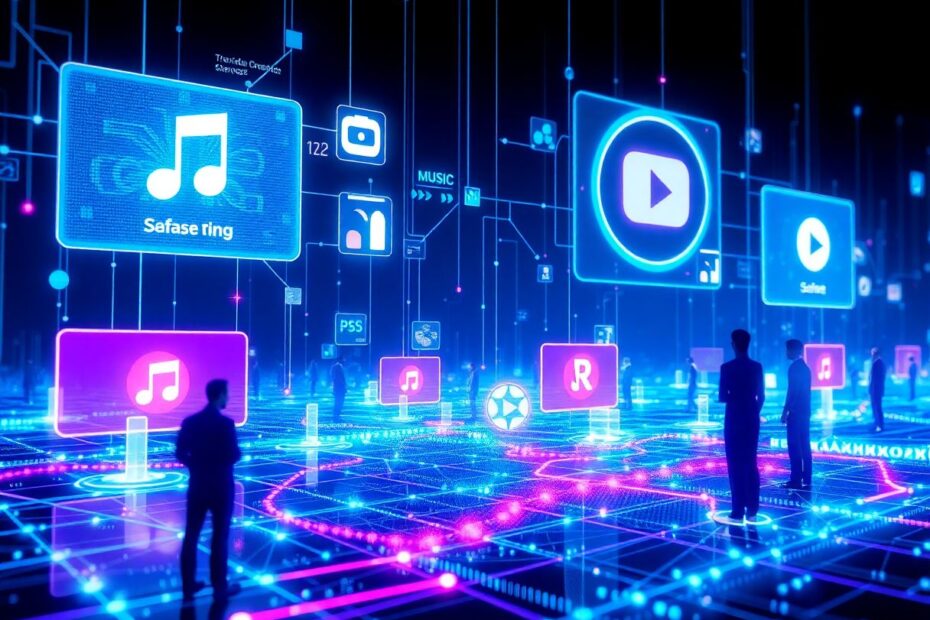In today's digital entertainment landscape, streaming services have become ubiquitous. Two major players in this space are Apple's iTunes and Amazon's suite of music and video offerings. As a tech enthusiast, I've spent considerable time analyzing and comparing these platforms to help you make an informed decision about which might best suit your needs.
The Evolution of Digital Media Platforms
Before diving into the specifics, it's worth noting how these platforms have evolved. iTunes, launched in 2001, started as a simple music player but grew into a comprehensive media management tool. Amazon's offerings, on the other hand, began with the Kindle e-book platform in 2007 and expanded to include music and video streaming services.
Music Streaming Capabilities
Library Size and Audio Quality
Both iTunes (now part of Apple Music) and Amazon Music boast impressive libraries. Apple Music offers over 90 million songs, while Amazon Music slightly edges this with about 95 million tracks. However, quantity isn't everything – quality matters too.
Apple Music streams at up to 256 kbps AAC, which provides excellent sound quality for most listeners. Amazon Music takes it a step further with their HD tier, offering lossless audio up to 24-bit/192 kHz. For audiophiles, this could be a game-changer, as it approaches studio-quality sound.
Exclusive Content and Curation
Apple has long been known for its exclusive releases and artist collaborations. Their Beats 1 Radio (now Apple Music 1) features shows hosted by renowned artists and DJs, providing a curated listening experience that many users find valuable.
Amazon counters with its "X-Ray" lyrics feature, which displays synchronized lyrics as songs play. They've also invested in exclusive content, including live artist events and original podcasts.
AI and Personalization
Both platforms leverage artificial intelligence for music recommendations, but their approaches differ slightly. Apple Music uses a combination of algorithmic suggestions and human curation, while Amazon Music relies more heavily on AI-driven recommendations based on listening history and user-created playlists.
Video Streaming Offerings
While iTunes offers movies and TV shows for purchase or rental, Apple's subscription video service falls under Apple TV+. Amazon's video content is primarily offered through Prime Video.
Content Libraries
Apple TV+ focuses on high-quality original content, with shows like "Ted Lasso" and "The Morning Show" garnering critical acclaim. Their library is smaller but highly curated.
Prime Video offers a mix of original and licensed content, with a significantly larger library. It includes popular shows like "The Marvelous Mrs. Maisel" and a vast back-catalog of movies and TV series.
Streaming Technology
Both services support 4K HDR streaming with Dolby Atmos on compatible devices. Apple has implemented its own HTTP Live Streaming (HLS) protocol, which adapts to network conditions for smoother playback. Amazon uses a similar adaptive bitrate streaming technology.
Ecosystem Integration
One of Apple's strongest selling points is its ecosystem integration. iTunes and Apple Music work seamlessly across Apple devices, with features like Handoff allowing you to start listening on one device and continue on another.
Amazon's ecosystem is more open, with their services available on a wider range of devices. The integration with Alexa-enabled devices is particularly strong, allowing for voice-controlled playback and smart home integration.
Pricing and Value Proposition
Apple offers Apple Music for $9.99/month for individuals, with a family plan available for $14.99/month. Apple TV+ is priced at $4.99/month.
Amazon's pricing is more complex but potentially more value-driven for Prime members. Amazon Music is included with Prime membership, with an upgrade to Music HD available for an additional fee. Prime Video is also included in the Prime subscription, which costs $139/year or $14.99/month and includes other benefits like free shipping.
Technical Underpinnings
From a technical perspective, both platforms use sophisticated content delivery networks (CDNs) to ensure low-latency streaming. Apple leverages its iCloud infrastructure, while Amazon utilizes its formidable AWS cloud services.
For music, both use advanced audio codecs. Apple primarily uses AAC (Advanced Audio Coding), while Amazon employs a mix of codecs including MP3, AAC, and FLAC for its HD tier.
Mobile App Performance
Both companies have invested heavily in their mobile apps. Apple Music is deeply integrated into iOS, offering features like Spatial Audio with dynamic head tracking on AirPods Pro and Max. Amazon Music's app is more platform-agnostic but offers solid performance across both iOS and Android.
In terms of data usage, both apps allow for offline downloads to save on mobile data. Apple Music tends to use slightly less data for streaming at comparable quality levels, likely due to more efficient compression algorithms.
Future Directions
Looking ahead, both platforms are investing in spatial audio technologies. Apple's Spatial Audio and Amazon's 3D Audio aim to provide more immersive listening experiences. There's also a growing focus on podcasts and other spoken-word content, with both companies acquiring exclusive shows and developing improved discovery features.
The Verdict
Choosing between iTunes/Apple Music and Amazon's offerings ultimately depends on your existing tech ecosystem, budget, and specific needs. If you're heavily invested in the Apple ecosystem and value a tightly integrated experience, iTunes and Apple Music are likely your best bet. The addition of Apple TV+ creates a compelling package for those interested in high-quality original video content.
On the other hand, if you're an Amazon Prime member or use Alexa-enabled devices, Amazon's services offer excellent value. The inclusion of Music and Prime Video in the Prime membership, along with the option for higher-quality audio streaming, makes it an attractive choice for many.
As a tech enthusiast, I appreciate the strengths of both platforms. Apple's attention to design and user experience is evident in their sleek interfaces and seamless ecosystem integration. Amazon's leveraging of AI for personalization and their more open approach to device compatibility are equally impressive.
Ultimately, the competition between these tech giants benefits consumers, driving innovation and improvements in streaming technology. Whether you choose iTunes/Apple Music or Amazon's services, you're getting access to vast libraries of content backed by sophisticated technology. And remember, in this digital age, it's entirely possible to mix and match services to create your ideal entertainment setup.
